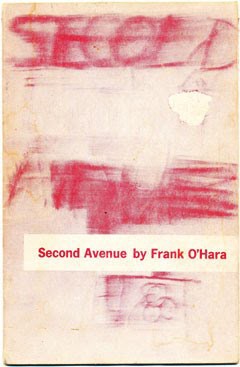Interactive Poetry

“Pardon my shtick,” Wayne Koestenbaum grinned to a dozen of us gathered one warm July evening in the East Village for “Marking Marks,” a walk the poet-painter-critic was leading in homage to Frank O’Hara’s 1953 poem “Second Avenue.” We were just a few steps west of 441 East Ninth Street, where O’Hara lived in a second-floor apartment from 1959 to 1963, the years during which he was, according to some, in fullest possession of his poetic powers. “I revere Frank O’Hara,” Koestenbaum explained, “and this might be my favorite of his poems.” Koestenbaum himself is revered as a vigilante on behalf of the glittering intellect. If John Ashbery once described “Second Avenue” as “such a difficult pleasure,” that evening, Koestenbaum praised it as “a poem big enough to contain [O’Hara’s] consciousness and the city’s consciousness as well.”
We were handed sketch pads, water-soluble markers, and pencils, and Koestenbaum explained that this evening’s walk would be punctuated by his prompts. “We will be on the lookout for events,” he said, “responding with linguistic marks or nonlinguistic marks” — meaning that our observations or ideas would be expressed within or without their sanctioned symbolic order. “Quantity, not quality,” Koestenbaum insisted. “We are working in the spirit of Frank O’Hara, who was always inspired.” Glancing at the graying sky, he added, “Let’s hope it doesn’t rain,” but thus far only the air conditioners seemed to be spitting on us.
In Artforum, Jennifer Krasinski details an exercise led by Wayne Koestenbaum: a group of people were handed sketch pads and markers and taken on a tour inspired by Frank O’Hara’s poem “Second Avenue.” I like the idea of a poem you can experience in real life, or like an event based on a poem; it seems like a nice way to start understanding poetry at all.